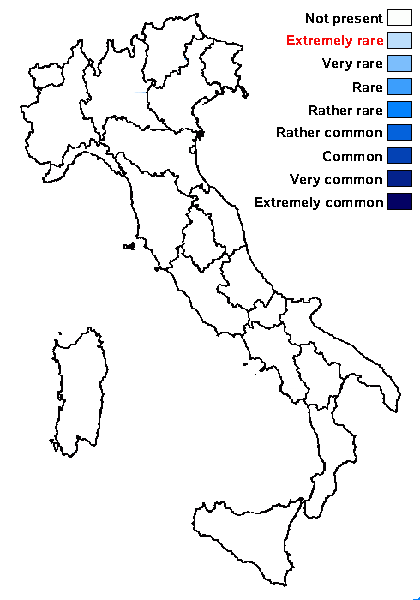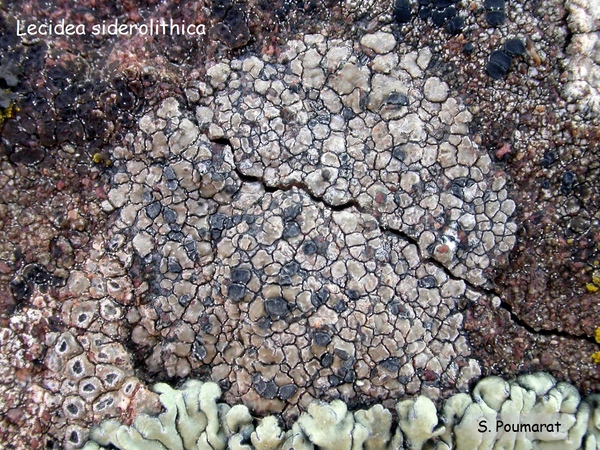Lecidea siderolithica Müll. Arg.
Flora, 55: 535, 1872
Synonyms: Lecidea nigrogrisea Nyl.
Distribution:
Description: Thallus crustose, continuous to rimose-areolate, usually thinly episubstratic, c. 0.1 mm thick, grey-brown, pale brown or ochraceous brown. Medulla white, I-. Apothecia lecideine, black, located between the areoles, slightly constricted at base, 0.6-0.8(-1.5) mm across, with a black, epruinose, flat to slightly convex disc and a thin, sometimes finally excluded proper margin. Proper exciple blackish brown in outer part, almost colourless within, C+ red; epithecium olive-green to olive-brown; hymenium colourless; paraphyses simple to sparingly branched and anastomosing; hypothecium dark brown to almost black. Asci 8-spored, clavate, Lecidea-type. Ascospores 1-celled, hyaline, ellipsoid, 7-12 x 3.5-5 µm. Pycnidia immersed. Conidia cylindrical. Photobiont chlorococcoid. Spot tests; thallus K-, C+ red, KC+ red, P-, UV-. Chemistry: gyrophoric acid. Note: on siliceous rocks at mid-elevations; known from the Western Alps (France), to be looked for in Italy.
Growth form: Crustose
Substrata: rocks
Photobiont: green algae other than Trentepohlia
Reproductive strategy: mainly sexual
Species of metal-rich rocks
Poorly known taxon in need of further study

Predictive model
Growth form: Crustose
Substrata: rocks
Photobiont: green algae other than Trentepohlia
Reproductive strategy: mainly sexual
Species of metal-rich rocks
Poorly known taxon in need of further study

Predictive model
 INDEX FUNGORUM
INDEX FUNGORUM
 GBIF
GBIF


